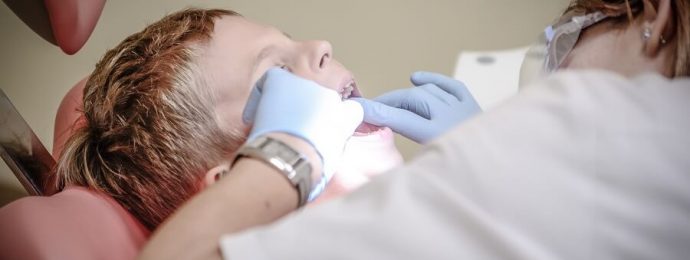Please note: Affinity Dental does not offer oral or intravenous (IV) sedation.
A Look at the Various Types and Benefits of Sedation Dentistry to Help You Relax at the Dentist
Many people avoid getting dental care because they have anxiety and fear of invasive treatments. But if left untreated, their dental problems can get worse and put their health at risk.
If you are one of those people who has anxiety about dental treatments, you might want to try sedation dentistry. Sedation is a method used to relax patients who have a hard time undergoing complex dental treatments.
What Is Sedation Dentistry?
Sedation dentistry involves receiving a sedative medication before, during, and sometimes also after a dental treatment to help you relax and stay comfortable throughout the procedure.
The sedatives used vary in type and will depend on the patient and the dental procedure. With mild sedation, the patient stays awake while feeling completely relaxed. And with deep sedation, the patient remains unconscious throughout the procedure.
How Does Sedation Dentistry Work?
The type of sedation dentistry used will determine the sedation methods—how the sedative is administered.
What Types of Sedation Is Used in Dentistry?
Dentists will administer a local anesthetic to prevent pain along with one of the following sedation methods to relax patients during a dental procedure.
Oral Sedatives
With an oral sedative, the dentist will write a prescription for the patient with instructions on how to take the sedative. Usually, the patient will take the pill an hour or two before the procedure.
Mild doses of oral sedatives will make patients feel a bit tired while reducing anxiety and increasing relaxation. And moderate doses will make patients fall asleep during the procedure—but they can be easily awakened with a gentle shake.
Nitrous Oxide
Nitrous oxide (also known as laughing gas) is combined with oxygen and inhaled through a mask that is placed on the patient’s nose before and during a dental procedure. Nitrous oxide helps relax patients, so they no longer feel fear or anxiety.
The dentist can easily control the level of sedation throughout the dental procedure. The effects of this sedative will also wear off quickly after the procedure, so patients can usually drive home soon after their dental appointment.
IV Sedation
This sedative is administered intravenously—through the patient’s vein. IV sedation works quickly and allows the dentist to control the level of sedative the patient receives during the procedure.
IV sedation uses anti-anxiety sedatives to make the procedure comfortable by placing the patient into a deep state of relaxation. While the patient usually remains awake during the procedure, they are less aware of what is happening, not remembering most or all of the dental treatment.
Patients usually need to fast before IV sedation. This means no eating, drinking, or taking certain medications for a set number of hours (typically eight hours) before the appointment. And they will need someone to drive them home to rest after the appointment, as they will be too groggy to drive or go about their regular day-to-day activities.
Deep sedation and general anesthesia are also types of IV sedation. With deep sedation, patients are almost entirely unconscious throughout the dental procedure. And with general anesthesia, they are completely unconscious and cannot be easily awakened.
Who Needs Sedation Dentistry?
Sedation dentistry is ideal for patients who are very anxious and overwhelmed with fear about visits to the dentist. It is also recommended for those who are undergoing lengthy and invasive procedures, such as root canals, impacted wisdom tooth extraction, and the placement of dental implants.
Sedation dentistry is ideal for people who:
- Suffer from dental phobia—a fear of the dentist or dental treatments
- Get nervous at the thought of visiting the dentist
- Have an acute gag reflex
- Have sensitive teeth
- Have a low pain threshold
- Can’t sit still in a dentist chair for long periods
- Have difficulty opening their jaw and keeping it open for a prolonged period
- Are resistant to local anesthetics
- Need plenty of dental work completed, making for a lengthy and intrusive procedure
Can Any Dentist Perform Sedation?
No. Dentists must be well-trained in the administration of sedation dentistry, so not all dentists will offer this service. While many dentists can administer minimal sedation—such as oral sedation and nitrous oxide—some will have a dental anesthesiologist available who is specially trained to provide all levels of sedation and anesthesia to children and adults.
What Are the Benefits of Sedation Dentistry?
Here are some of the benefits of sedation dentistry:
- Reduce or eliminate fear and anxiety at the dentist
- Enjoy relaxation and comfort during dental procedures
- Maintain good oral health instead of avoiding the dentist
Is Sedation Dentistry Safe?
Yes, sedation dentistry is safe when administered by a trained dentist or dental anesthesiologist. Before performing sedation dentistry, the dentist will go over the patient’s medical history to ensure they are good candidates for the sedation, and to determine the best type of sedation for the patient’s health and anxiety needs.
Are There Any Side Effects?
Prior to administering a sedative, dentists will inform their patients of the potential side effects of the drug.
Some patients may experience temporary side effects depending on the type of sedation used. These possible side effects include dry mouth, dizziness, headaches, and nausea.
Whether you have a fear of the dentist or a complex dental treatment coming up, speak with your dentist about sedation dentistry and the best options for helping you have a comfortable and relaxing dental visit.

